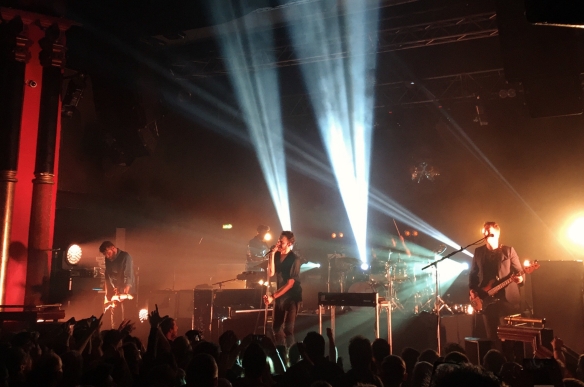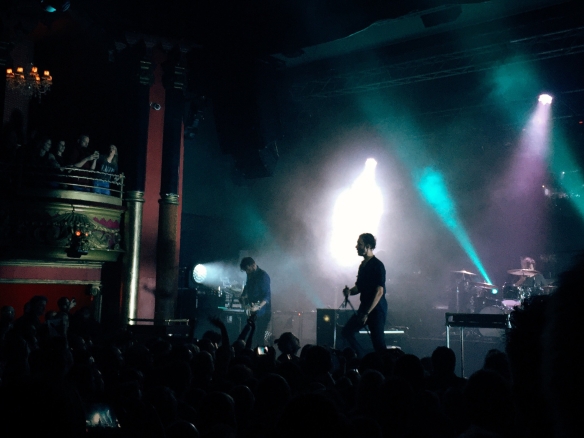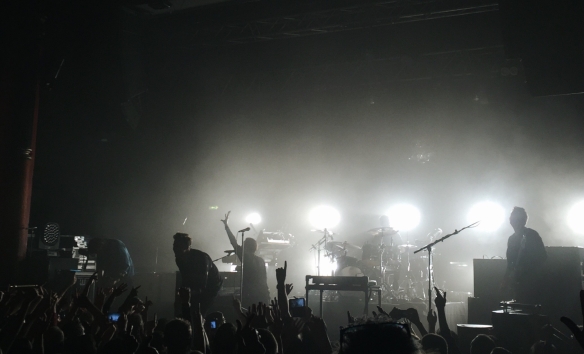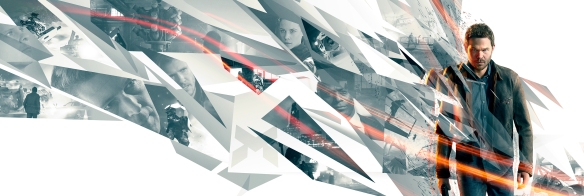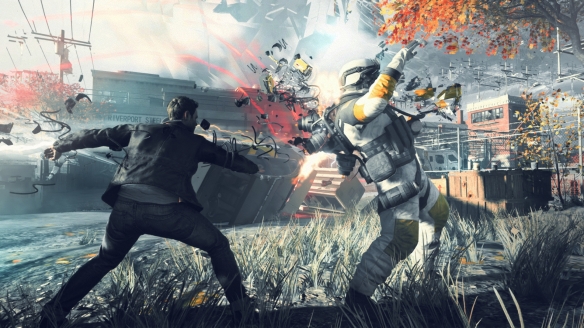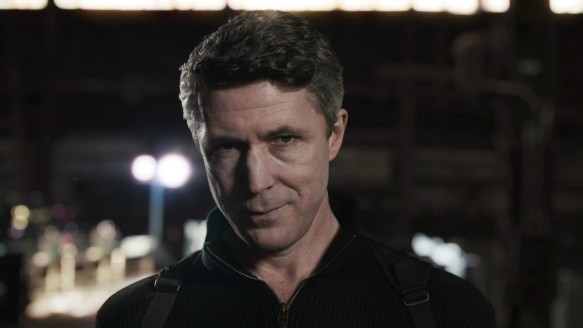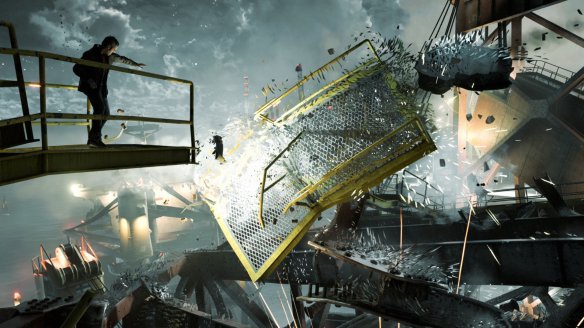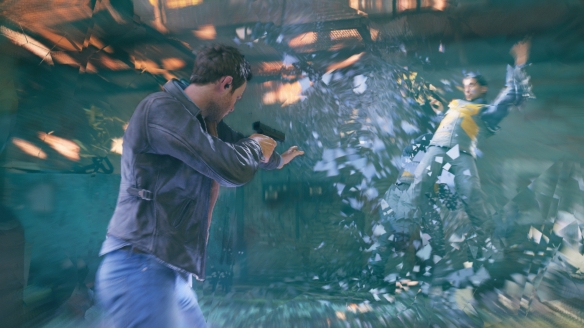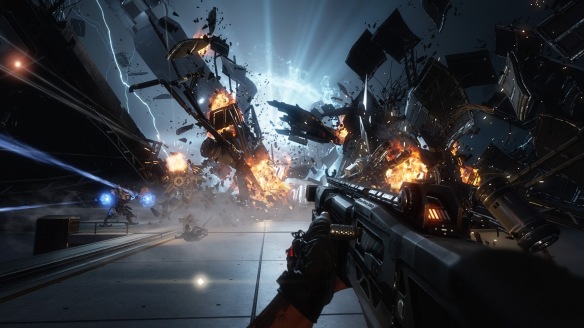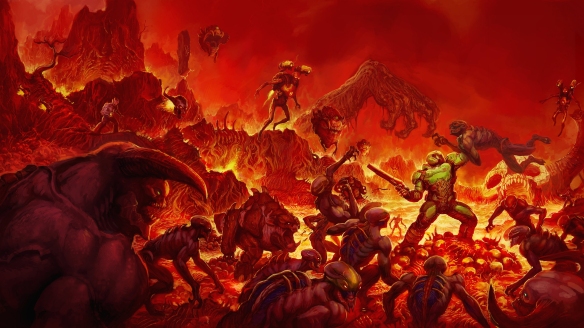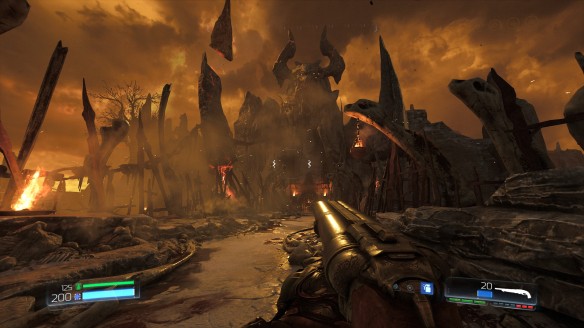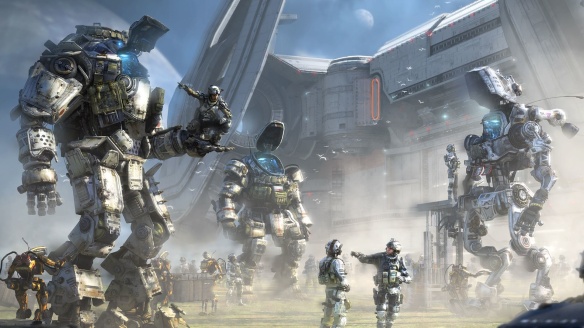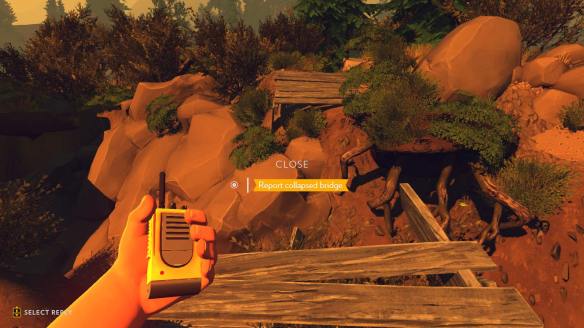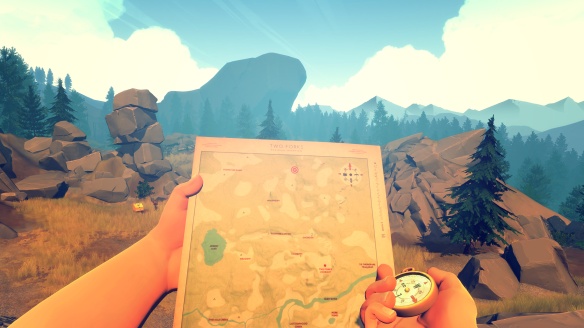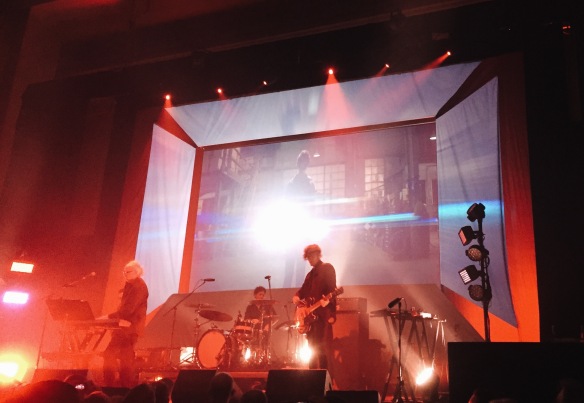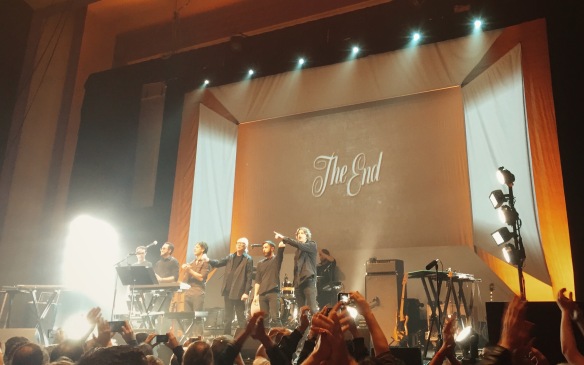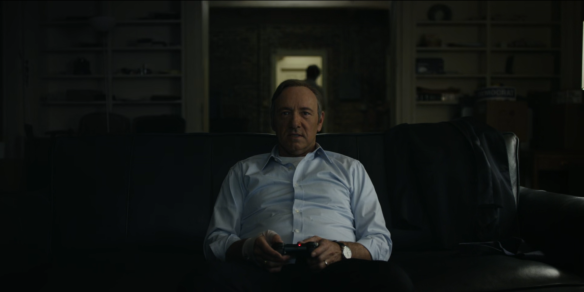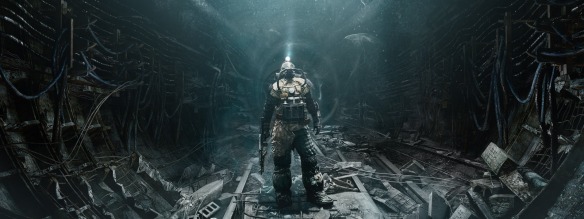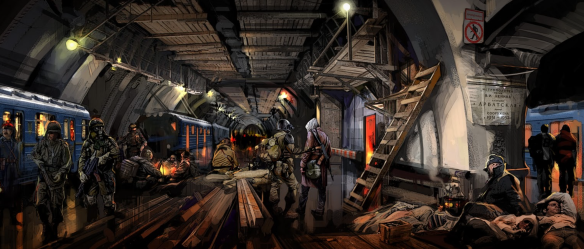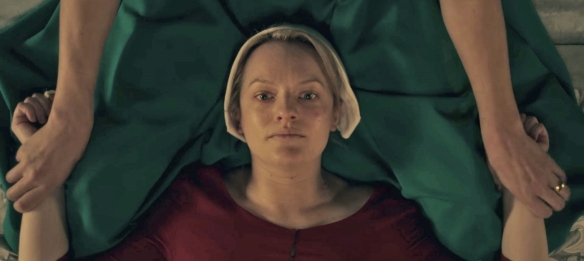
Hulu’s The Handmaid’s Tale has finished airing in the UK –– and to near-unanimous acclaim. The 2017 adaptation of Margaret Atwood’s iconic dystopian novel has bolstered the book back into public discourse, raised discussion about our own, unsettling, political climate and has already been commissioned for another season. It is, on the whole, an enjoyable show –– to the extent such content can be considered ‘enjoyable’ –– and one that I actively admired in its direction.
But what makes The Handmaid’s Tale so interesting is in many ways what distances it from the original text. And I am a huge fan of Atwood’s original vision. For years I’ve cried out for a credible adaption; for both its unyielding political pertinence and the rather lacklustre 1990 motion picture. But this is not a note-for-note adaptation, rather, one that makes tasteful decisions for the visual medium and its newer audience. In doing so, it hits notes that its thirty-something counterpart simply cannot, whilst opening up a whole world of creative, if not harrowing, possibilities.
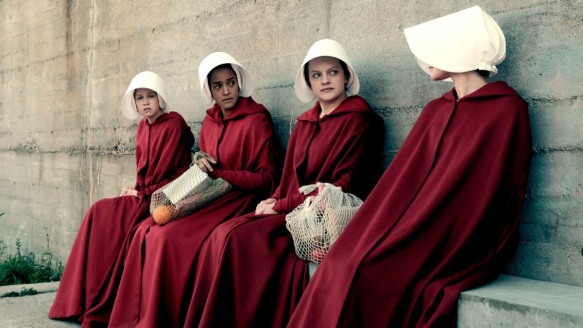
In short, the ten episode season follows the turmoils of Offred (Elizabeth Moss), a handmaiden living under the theocratic regime of Gilead: formerly the United States of America. Her role as handmaiden is purely reproductive; serving, literally, as a fertile surrogate for a ruling class family. This is justified under a thin mantra of religious scripture and need to repopulate, alongside a fiercely autocratic police state. It’s a dark and often unsettling experience to watch. Throughout the ten-or-so hours, we are given flashbacks to the rise of this society –– events that seem inherently more exciting than Offred’s plight –– alongside the politics, repression and rebellion it incites along the way. We are given hope, horror and a slow-burning sense of exposition. And it ends, rather abstractly, just like Atwood’s novel.
My intention here, naturally, is not regurgitate every plot-point –– I implore you all to read and watch it for yourselves –– but rather, to dissect when it shines and where it can go from here. No doubt, Atwood’s text is a remarkably timeless novel. Embedded in the AIDS epidemic of the mid-eighties, her vision of a militant patriarchy propped up by Old Testament scripture was one of tangible plausibility. Its nuanced gender politics: where women were valued on a primal capacity to bear children, whilst ‘Wives’, ‘Aunts’ and ‘Marthas’ held their own moral jurisdiction within the family home, invites feverous discussion. It is a world where sexual subservience and agency are literally acts of duty and rebellion. Offred’s Gilead –– her friends, resistance, torment and hope –– are as rich and vibrant as the red cloaks we associate with it.

But in Hulu’s direction, come a number of changes. Primarily, these feel logical; to land heavier blows with an audience unfamiliar with this new world. Indeed, whilst its chronology remains unclear, Hulu places Offred (or, rather, ‘June’) in a modern, contemporary America. This is a millennial generation –– one of Tinder and Uber –– rather than an America lamenting the seventies. In fact, the nods to these apps, ‘promiscuous sex’ and ‘sluts’ are used explicitly to justify the regressive politics. Where Atwood drew inspiration from homophobic protest in the eighties –– with fundamentalists viewing AIDS as a form of sodomite punishment –– the fertility crisis in this tale is prefaced by a modern dilemma. One that blames environmental pollution, sexually transmitted infection and the demise of the family unit as inviting penitence. It leans on the apps, lifestyle choices and individual freedoms of today, to strike a discord with the world of tomorrow.
It also takes a number of less obvious turns from the text. There’s certainly a greater emphasis put on June’s husband –– both with Moria and the extended flashbacks –– that set-up a wider narrative beyond the initial text. It also blurs the racial connotations by incorporating a black actress as a handmaiden; instead of maintaining Gilead’s ardent white supremacy. This has sparked some debate, one I feel less qualified to indulge, but it certainly reflects that desire to modernise the ‘pre-Gilead’ world for heightened feasibility. Alongside emphasising the calculated nature of the regime: one that, ironically, does not discriminate –– and is even happy to maim its subjects –– so long as they remain fertile.
And Gilead feels terribly plausible as a result of all this. There is, undoubtedly, a relationship with recent political movements and the chilling reality of The Handmaid’s Tale. That’s not to say Autocratic Christianity is on the rise, but that the steps that accommodate authoritarianism feel increasingly digestible. It’s a crucial part of Atwood’s vision. The ‘silent majority’ that allowed ‘Gender traitors’ to be incarcerated; that allowed for a militant patriarchy to arise for the ‘greater good’. What we see as moral bankruptcy, they see as justified. Atwood, and indeed Hulu, carve a sense of rationale and routine in Offred’s world, that punctuates the drama on screen.
‘All remaining fertile women should be collected and impregnated. By those of superior status, of course.’
‘You’re talking about concubines.’
‘I don’t care what you want to call it.’
‘There is Scriptural precedent.’
‘”Act” may not be the best name from a branding perspective.’ ‘The “Ceremony”?’
There is resistance, of course, in the formative days of the regime. But then comes acquiescence. The lost hope and the mundane sense of duty. ‘Not another stoning… I hate stonings’. And it is precisely that acceptance, that feeling of letting it happen, that makes The Handmaid’s Tale all the more frightening.
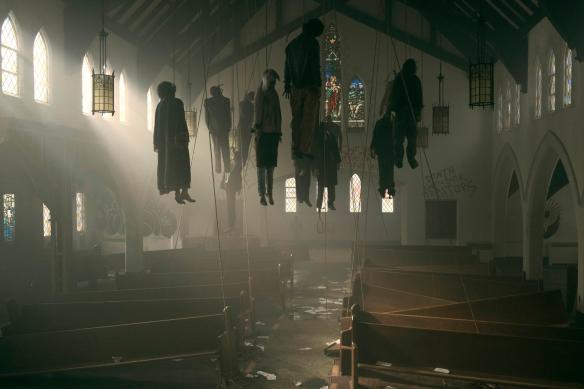
The adaptation excels on a technical level, too. Its has a bold and engaging visual style. The costume design is especial notable: with a visual dissonance between the different ‘ranks’ that feels far removed from a once cosmopolitan America. It also pays on the most visceral elements of the text. The executions, the protests, the interrogations and, unsurprisingly, the sex. This may feel a little crass, but it carefully extrapolates the most engaging moments for the screen, with scenes of riots and rallies offering the most immediate visual spectacle. There is also a grandiose quality –– almost Riefenstahlite in its imagery of fascism –– which certainly touches a nerve. The flashback sequences also provide a welcome change of tempo, as the Gilead regime is naturally more stable. This back-and-forth not only crafts a slower, more intriguing story-telling, but one that places frantic, dashes-across-the-border alongside droll walks to the supermarket.
That said, there are some shortcomings here. The day-in-day-out of Offred’s ordeal (and subsequent rebellion) ties into a normalised sense of routine. It’s a cornerstone of Atwood’s text –– the ritualised nature of ‘the ceremony’ especially –– but at times this feels at odds with the direction of the show. These moments of great visual spectacle and action appear a little conflicted. It forms something of a ‘mid-season bloat’, where the show feels torn between a loyalty to follow the cues of the book and doing something different. It’s not an overbearing problem –– it certainly doesn’t detract from the overall experience –– but it is worth highlighting. The pacing can feel a little jarring, if not frustrating, at various junctions.
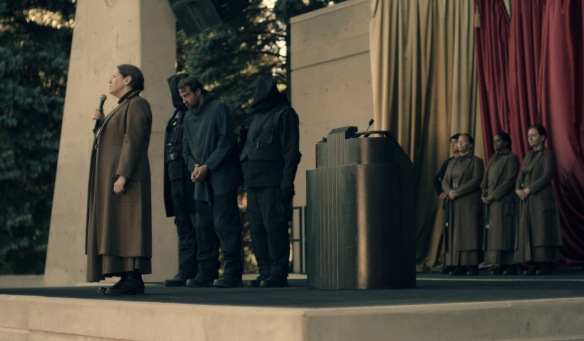
Returning to my opening point, though, the deviations from the text remain where the show is strongest. The moments where it really indulges, graphically, in the horrors of Gilead. In the ways a text simply cannot. To some extent, this is why I am so excited about the prospect of a second season. Margaret Atwood knowingly admits she does not know the future of Offred: her fate now lies, precariously, in the hands of the Hulu’s show-runners. But in a similar fashion to The Man In The High Castle –– curiously, another dystopian novel with an oddly metaphysical ending –– there is a world beyond the book. In fact, I argue that Amazon’s fantastic adaptation is actually stronger than Philip K. Dick’s original vision. He, similarly, built a vibrant dystopian future, but one that was far more interesting than the story that actually drove it. Amazon’s choice to extrapolate the more visual facets; to allow us to explore, smell and taste this world, is a creative masterstroke. And I hope Hulu takes notes from this approach. Given the creative talent on board, there is huge potential for to explore Gilead –– the resistance, the reparations and Offred’s family beyond the border –– all through the lens of this stylish and enthralling production.
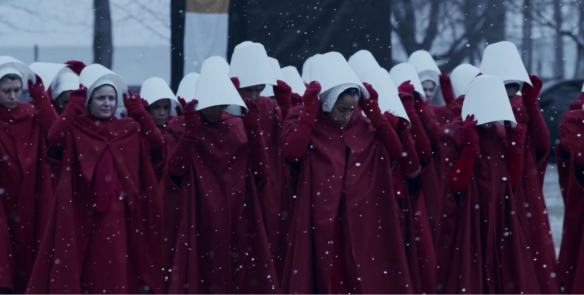
On the whole, The Handmaid’s Tale is an intense, sometimes unwatchable, journey through an unsettling future. It is a tremendous production with a meticulous attention to detail, even if at times, it feels caught up in those details and the groundwork Margaret Attwood laid. No doubt, her text takes on new life in this programme –– and it still feels honoured and respected despite careful changes. And to what end? Beneath the shock, awe and fancy camera-work, lies a tale of solidarity; of feminism, of rebellion and compassion. Of quiet submission and rebellion. The Handmaid’s Tale is as relevant now as it was decades ago. And that’s not necessarily a positive statement.
But its future –– and ours –– is still unwritten. Where The Handmaid’s Tale goes next is entirely uncertain and open to debate. Yet this ambiguity births what I consider a new freedom; for new ventures, new platforms and essentially a more liberated vessel of storytelling. Which is precisely why I have hope for such a miserable world.
Praise Be.
